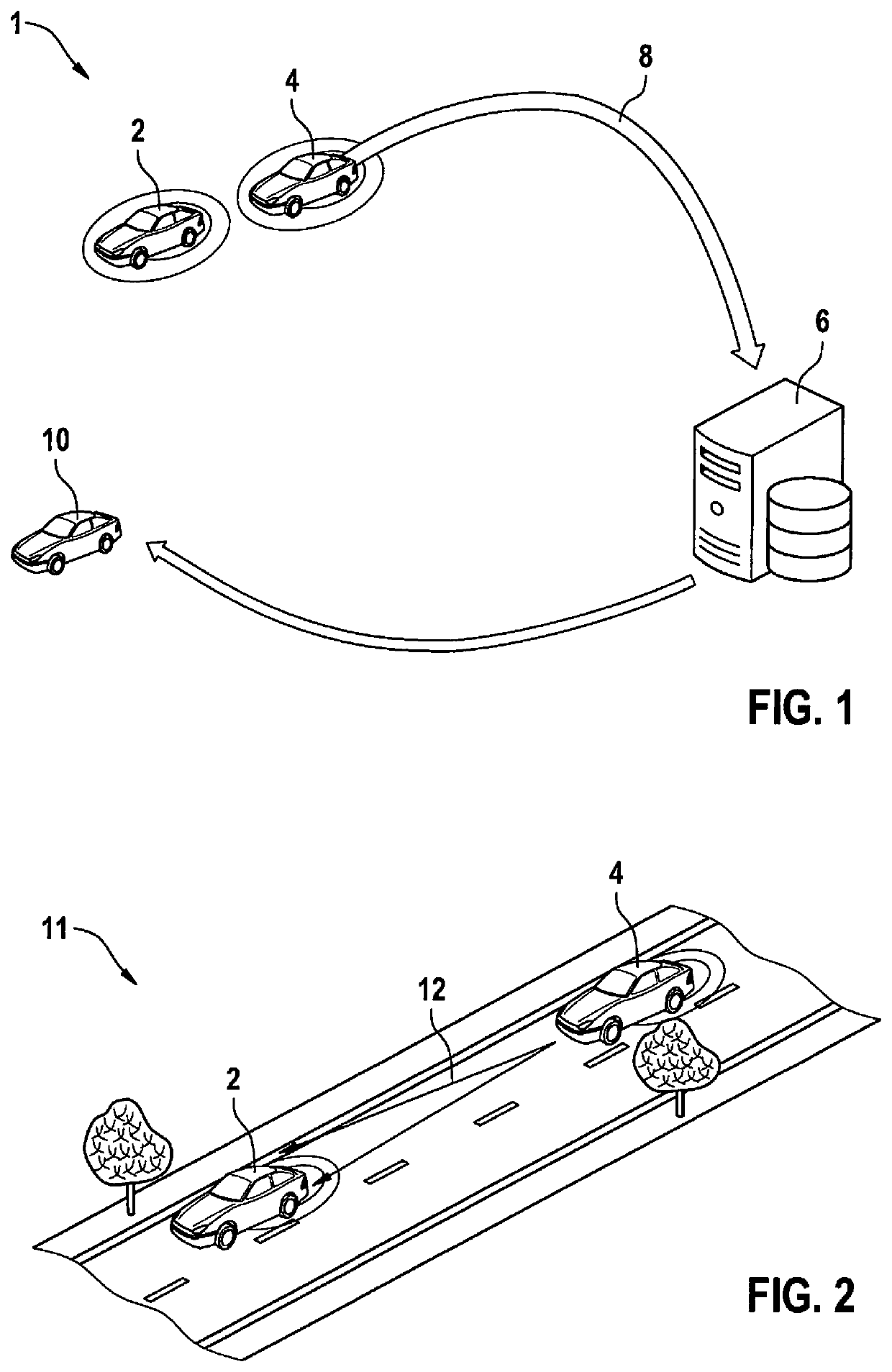Method for providing and improving a positional probability distribution for GNSS received data
a technology of probability distribution and received data, applied in the direction of railway signalling and safety, instruments, vehicle components, etc., can solve the problems of enabling a relatively poor lateral accuracy of approximately 13 m and a relatively poor vertical accuracy of approximately 22 m, and achieve the effect of improving the accuracy of position measurements
- Summary
- Abstract
- Description
- Claims
- Application Information
AI Technical Summary
Benefits of technology
Problems solved by technology
Method used
Image
Examples
Embodiment Construction
[0027]FIG. 1 shows a schematic profile of a method 1 for providing at least one correction term according to a first exemplary embodiment. A first mobile system 2 or a first vehicle 2 communicates via a wireless communication link with a second mobile system 4 or a second vehicle 4. Both vehicles 2, 4 have ascertained their respective positional probability distribution as per GNSS. Second vehicle 4 has ascertained its distance 12 to first vehicle 2 with the aid of an adaptive cruise control, and transmitted distance 12 to first vehicle 2. Thus, both vehicles 2, 4 may carry out corrections to their respective positional probability distributions on the basis of their positional probability distribution and the more precisely ascertained distance 12 of both vehicles 2, 4.
[0028]According to the exemplary embodiment, vehicle 4 measures the relative position of first vehicle 2 with the aid of onboard sensors. The position of first vehicle 2 may subsequently be determined from the calcul...
PUM
 Login to View More
Login to View More Abstract
Description
Claims
Application Information
 Login to View More
Login to View More - R&D
- Intellectual Property
- Life Sciences
- Materials
- Tech Scout
- Unparalleled Data Quality
- Higher Quality Content
- 60% Fewer Hallucinations
Browse by: Latest US Patents, China's latest patents, Technical Efficacy Thesaurus, Application Domain, Technology Topic, Popular Technical Reports.
© 2025 PatSnap. All rights reserved.Legal|Privacy policy|Modern Slavery Act Transparency Statement|Sitemap|About US| Contact US: help@patsnap.com


